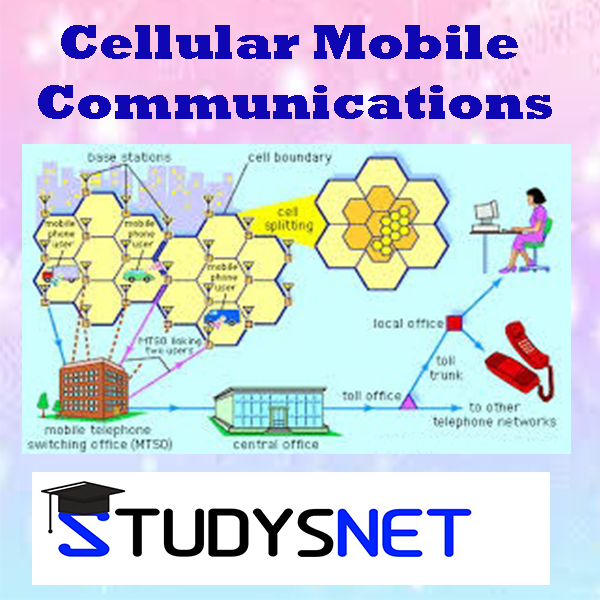Cellular Mobile Communications free videos and free material uploaded by Ramanjaneyulu K .
OBJECTIVES:
The student will be introduced to:
1. Understand the basic cellular concepts like frequency reuse, cell splitting, cell sectoring etc., and various cellular systems.
2. Understand the different types of interference s influencing cellular and mobile communications.
3. Understand the frequency management, channel assignment and various propagation effects in cellular environment.
4. Understand the different types antennas used at cell site and mobile.
5. Understand the concepts of handoff and types of handoffs.
6. Understand the architectures of GSM and 3G cellular systems.
UNIT I
CELLULAR MOBILE RADIO SYSTEMS: Introduction to Cellular Mobile System, uniqueness of mobile radio environment, operation of cellular systems, consideration of the components of Cellular system, Hexagonal shaped cells, Analog and Digital Cellular systems.
CELLULAR CONCEPTS: Evolution of Cellular systems, Concept of frequency reuse, frequency reuse ratio, Number of channels in a cellular system, Cellular traffic: trunking and blocking, Grade of Service; Cellular structures: macro, micro, pico and femto cells; Cell splitting, Cell sectoring.
UNIT II
INTERFERENCE: Types of interferences, Introduction to Co-Channel Interference, real time Co-Channel interference, Co-Channel measurement, Co-channel Interference Reduction Factor, desired C/I from a normal case in a omni directional Antenna system, design of Antenna system, antenna parameters and their effects, diversity receiver, non-cochannel interference-different types.
UNIT III
FREQUENCY MANAGEMENT AND CHANNEL ASSIGNMENT: Numbering and grouping, setup access and paging channels, channel assignments to cell sites and mobile units: fixed channel and non-fixed channel assignment, channel sharing and borrowing, overlaid cells. CELL COVERAGE FOR SIGNAL AND TRAFFIC: Signal reflections in flat and hilly terrain, effect of human made structures, phase difference between direct and reflected paths, straight line path loss slope, general formula for mobile propagation over water and flat open area, near and long distance propagation, antenna height gain, form of a point to point model.
UNIT IV
CELL SITE AND MOBILE ANTENNAS : Sum and difference patterns and their synthesis, omni directional antennas, directional antennas for interference reduction, space diversity antennas, umbrella pattern antennas, minimum separation of cell site antennas, high gain antennas.
UNIT V
HANDOFF STRATEGIES
Concept of Handoff, types of handoff, handoff initiation, delaying handoff, forced handoff, mobile assigned handoff, intersystem handoff, vehicle locating methods, dropped call rates and their evaluation.
UNIT VI
DIGITAL CELLULAR NETWORKS: GSM architecture, GSM channels, multiple access schemes; TDMA, CDMA, OFDMA; architecture of 3G cellular systems.
- Unit-1 Cellular Mobile Communications lecture notes
- Unit-2 Cellular Mobile Communications lecture notes
- Unit-4 Cellular Mobile Communications lecture notes
- Unit-5 Cellular Mobile Communications lecture notes
- Unit-6 Cellular Mobile Communications lecture notes

- 0 Reviews
- 22 Students
- 73 Courses

Write a public review